How to Grow Organic Vegetables: 11 Tips and Tricks
-
Pete Ortiz
- Last updated:
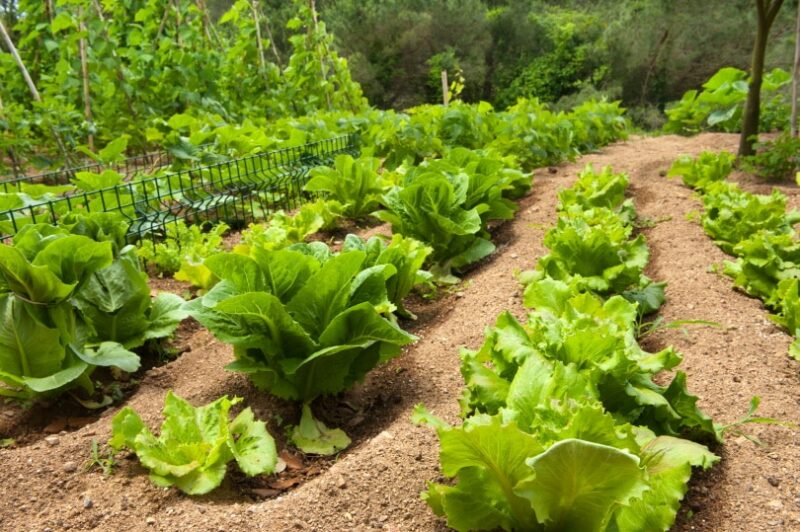
Have you ever wanted to grow organic vegetables but do not think you can do it? Despite popular belief, organic gardening is not as labor-intensive as some believe. It is also cheaper than other growing methods. If anything, maintaining an organic garden is easier and far less costly. The best way to grow organic vegetables is starting from seeds. However, growing organic vegetable seeds presents a new set of challenges than growing a conventional garden.
In this article, we will discuss various reasons why you should consider propagating your vegetables from organic vegetable seeds. We will also give you a step-by-step planting guide for growing organic vegetables from seeds and 11 tips on how to get optimum results from your vegetable garden. Read on to learn more.
Why Grow Vegetables From Organic Vegetable Seeds?
You may be tempted to purchase young plants from a nursery or garden center. Yet, despite the convenience and ease of buying a growing plant, these plants may not be able to meet the goals and standards of an experienced and dedicated organic farmer. Here are some of the things that you want to remember:
- If you don’t propagate your plants from the seeds and don’t know the initial grower, it can be quite difficult to tell if the plants were cared for organically. You can only be sure if you buy your seedlings from a trusted source or have grown them yourself.
- Just as plants must meet the strict guidelines to get the USDA “organic certified” label, so do organic seeds. You can get sources of certified organic seeds by searching online or from your local store. Sure, the prices may vary. But the price of purchasing an already matured is significantly higher than the cost of starting from seeds.
- Starting from organic vegetable seeds will also allow you to start growing your plants at an appropriate time. The germination of organic vegetables usually begins indoors, after which you have to transfer the hearty plants outdoors as early as possible for optimum productivity.

Getting Started
Select the containers from which to germinate your seeds. The most suitable material for growing containers is plastic because it is cheaper. After selecting your container, place it in a shallow tray to allow drainage.
Prepare your planting medium. Look for a commercially sold germinating mix. It consists of vermiculite, perlite, peat, and sometimes compost. Ensure that you do not grow your seeds in soil with high saline and nitrogen levels. Just fill each container with a medium up to ½ inches from the top.
Add seeds to the soil while ensuring they are at least ½ Inch apart. Cover the seeds with just enough growing mix to cover the top. This is, however, a general step, so consider checking for your plant-specific instructions. Some gardeners even recommend skipping this step.
Add water to moisten the seeds. Cover your pot and tray with clear plastic materials to trap moisture. When you notice sprouts, remove the plastic covering and transfer your plant to a well-lit area with enough ventilation.
Meet your watering and nutrient requirements. Regular watering is important, but ensure you do not overdo it to prevent root rot. To feed your plants, add some compost to your pot. Organic fertilizers are also a viable option.
Thin the herd by culling the weakest vegetable seedlings as soon as the second set of leaves appears. It’s recommended that you leave one plant per container. Ensure that your plants are hardy enough to survive outdoors by placing the tray outside for several hours a week before transferring them. This will allow your plants to adapt to the environment.
How to Grow Starting From Organic Vegetable Seeds: A Step-by-Step Guide
1. Location
Just like in real estate, the location you plant your vegetables is key. As you select a spot, factor in accessibility and sunlight exposure. Most vegetable varieties require at least 8 hours of sunlight for maximum growth. Overshading will only undermine your best-growing efforts.
Granted, some shade will benefit some vegetables like greens and lettuce. However, some vegetables like strawberries, carrots, squash, and tomatoes require full sun exposure. You should also check to see how the sun behaves and shifts in your yard in different seasons.
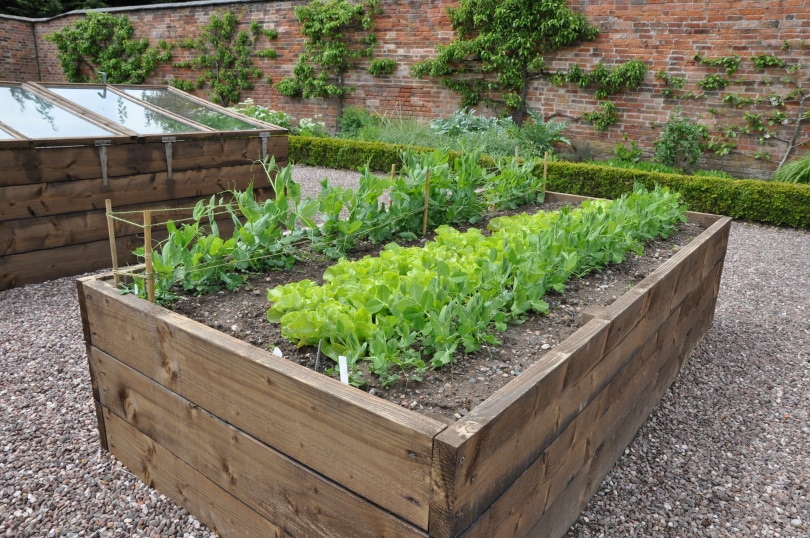
Other garden location considerations you should have in mind include:
- Can wildlife access and feed on your vegetables? Are chemicals used in nearby yards?
- Can you easily access the garden daily?
- Does your proposed garden experience frequent flooding?
These questions will help you determine the best location for your organic vegetables that ensures maximum productivity.
2. Invest In Good-Quality Soil
Always build your garden on a solid soil foundation with high nutrient content. Soil helps anchor your plant roots, availing water and facilitating the absorption of nutrients. In an ideal situation, we would begin propagating our organic vegetables from highly nutritious soil, but gardening doesn’t work that way.
Fortunately, you can easily convert even the most compacted soil into beneficial soil by adding organic matter such as straw, leaves, or mulch. Over time, microorganisms will break down the materials turning your soil into rich loam soil.
If you are a beginner, consider starting your vegetable garden by adding at least 2 to 3 inches of compost. Also, add 1–2 inches of compost every season to ensure your soil has sufficient nutrients. If you cannot make your own compost, purchase topsoil or high-quality compost approved for organic plant production. Do not use synthetic fertilizers or chemicals in your vegetable garden.
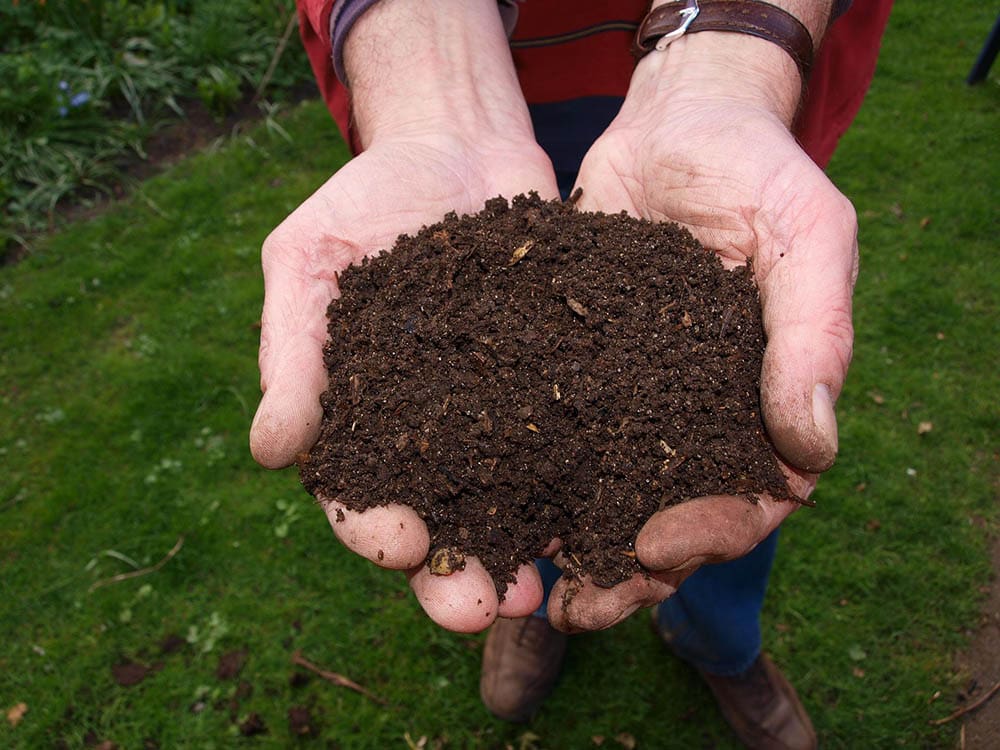
3. Begin Small
There is nothing as demoralizing to a gardener as taking on a huge planting project and getting overwhelmed before you see it through. Before you bite more than you can chew, start your gardening journey with only a few plants and expand as soon as you have mastered growing them. Otherwise, you might end up with an overgrown, weedy, and stressed-out garden.
Keep in mind that growing your organic vegetable garden is supposed to be a relaxing and stress-free endeavor. So, it’s best to start in a small space to better focus on your garden. Even a yard that measures 50 by 100 is enough to produce a substantial yield with regular watering, weeding, and harvesting.
For instance, if you want to plant tomatoes, instead of planting 10 plants and ending up with a tangled mess, you can plant two tomato plants. With regular staking and pruning, you can have the same yields as the ten plants. Furthermore, vegetables from a well-maintained garden are of higher quality than those from an overgrown garden that is too large to maintain.

4. Find Your Niche
As a new gardener, you might want to overgrow vegetables in your garden right from the start. While diversity may be important to create a balanced garden ecosystem, you can still practice diversity planting while concentrating on a specific niche. This means that you should focus on planting one type of vegetable until you are good at it. Your niche could be based on the growing seasons or crop variety.
Summer crops are also a great niche you can focus your efforts on. If you have a lot of free time in summer, there is no need to overwhelm yourself with winter or fall gardening. This way, you can learn everything there is to know about growing summer crops like basil and tomatoes so that you can diversify your garden the following season.
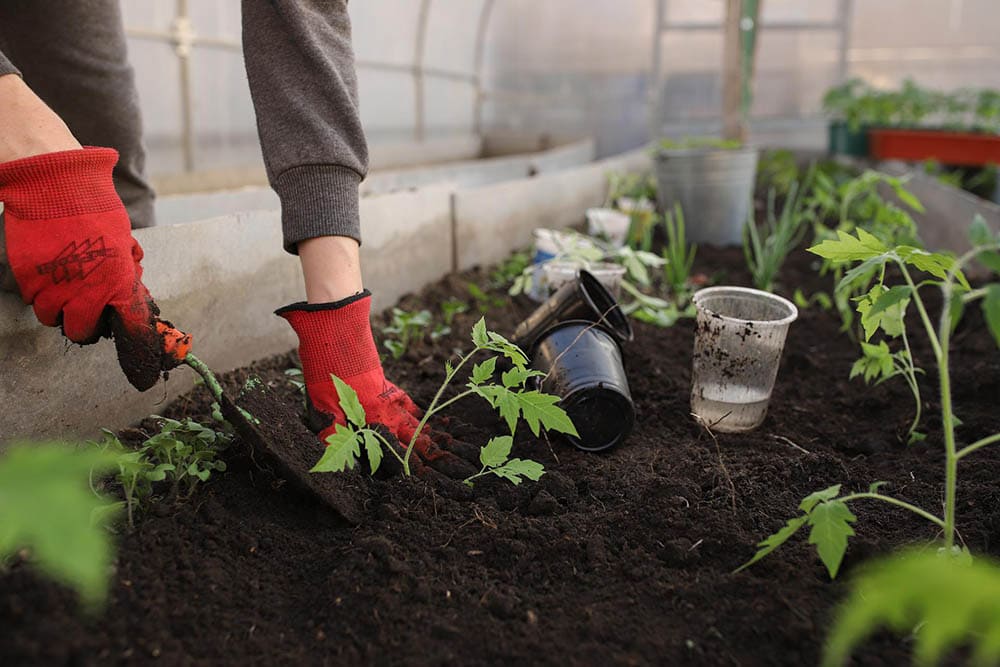
5. Grow Crops You Love
One major mistake that gardeners make is planting vegetables that they don’t actually enjoy eating due to trends and peer pressure. Instead, focus your efforts on growing food crops that you truly enjoy, thus avoiding wasting your space, time, and labor. You will find it is more rewarding to plant vegetables that serve as ingredients for the food on your dinner table.
Make a list of vegetables that thrive in your locality and focus on them during the first season. If you are a beginner, you could start with vegetables like turnips, lettuce, zucchini, and radishes because they are easy to grow. Plants like basil may be easy to water, but you may be unmotivated to properly grow them if you have no intention of eating or selling them.
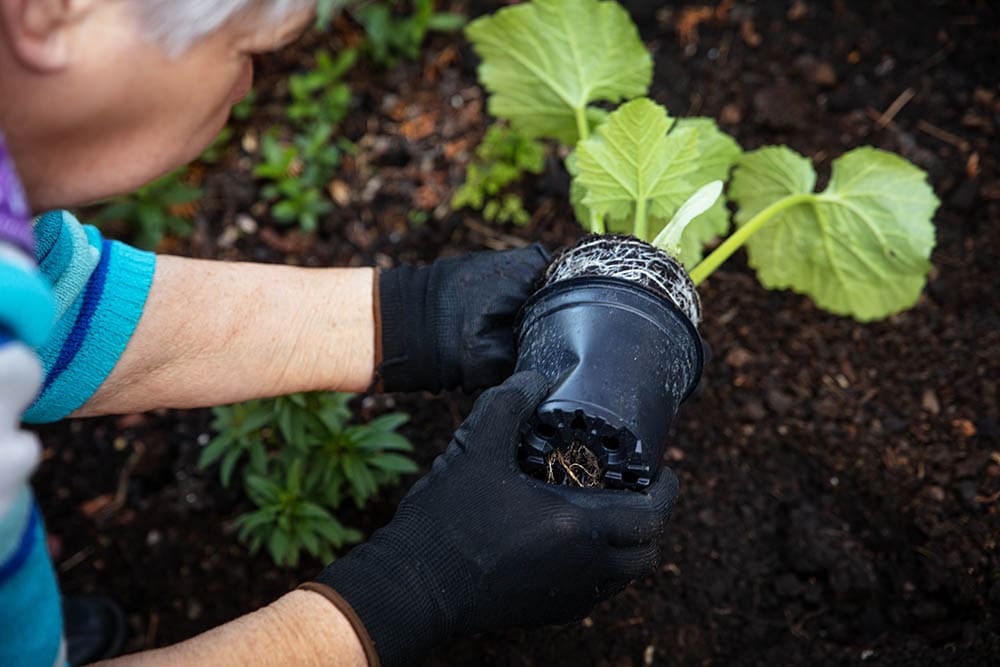
6. Buy Transplants From a Nursery
While growing vegetables from organic vegetable seeds is fun and rewarding, it can get overly complicated and requires more farming equipment. Gardening experts recommend beginners start their vegetable patches by planting vegetable seedlings. Also known as transplants or starts, these seedlings can be purchased from your local organic nursery or gardening center.
This way, you get to skip the headaches and inconveniences associated with propagating your vegetables from seeds by starting with healthy baby plants.
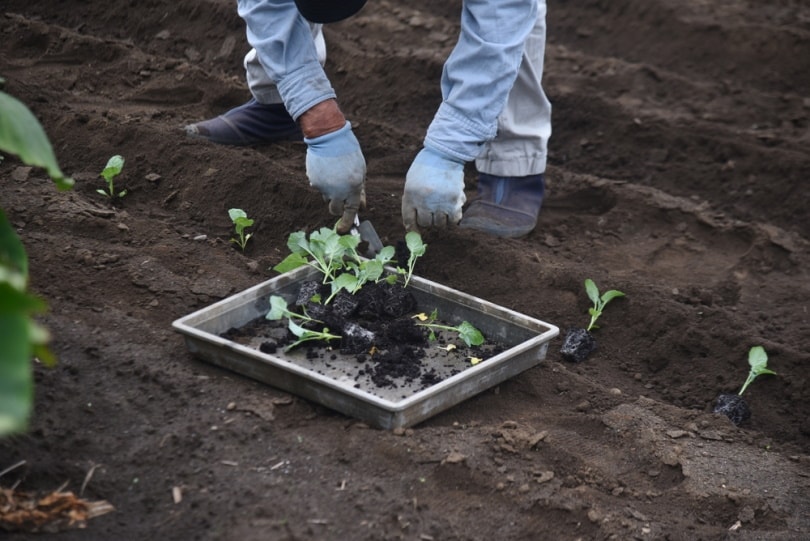
7. Choose the Correct Vegetable Varieties
Before choosing a plant for your vegetable patch, ensure that it is suited to your interests and skill level. Like animals, plants also have a myriad of different varieties. So, when choosing your garden crops, ensure they are suited to space, climate, and flavor pallet. For instance, some broccoli species are best suited for summer, while others do better in winter. The same applies to tomatoes, with some varieties planted for trellising purposes, whereas bush tomatoes don’t produce vines so they are considered determinate.
These subtle nuances may be confusing, but do not be overwhelmed. You just need to research the vegetable varieties you are planting for a better understanding. You can learn about the various vegetable varieties from the internet and seed catalogs. Alternatively, farms and local varieties can also inform you about the differences in varieties and which ones would serve your specific needs and context.
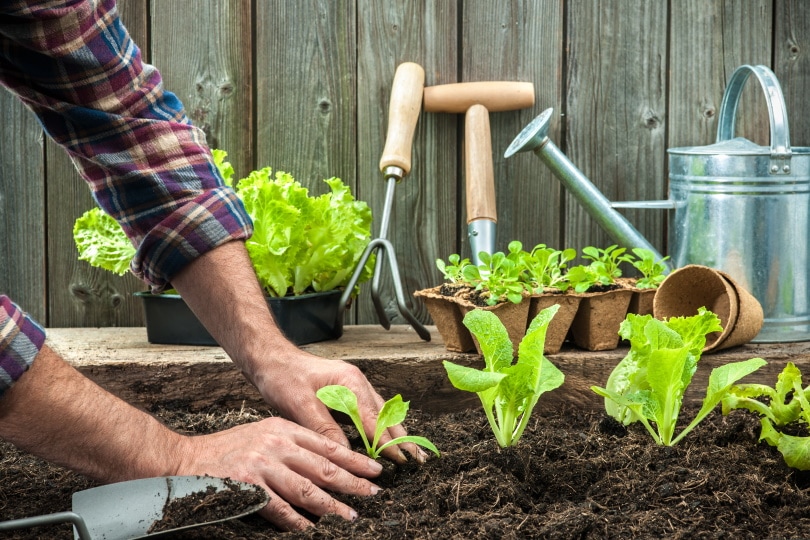
8. Pay Attention to Your Crop’s Watering Requirements
Besides soil and sunlight, water is one of the most important considerations in growing organic vegetables. Therefore, you will want to start growing your vegetables next to a reliable water source such as a city water spigot or a well. You can water using a simple garden hose or make an irrigation system with soaker hoses, sprinklers, or drip irrigation.
Despite the method you use to water your plants, make sure that the water source has been tested for contaminants. If you reside in a city, it would be better if you installed a cheap water filter in your outdoor spigot to limit the amount of chlorine and other chemicals from ending up in your yard garden.
Also, make sure your garden is moist but not waterlogged. Furthermore, periodically check the weather updates to ensure that you have time to water your vegetables during dry spells.
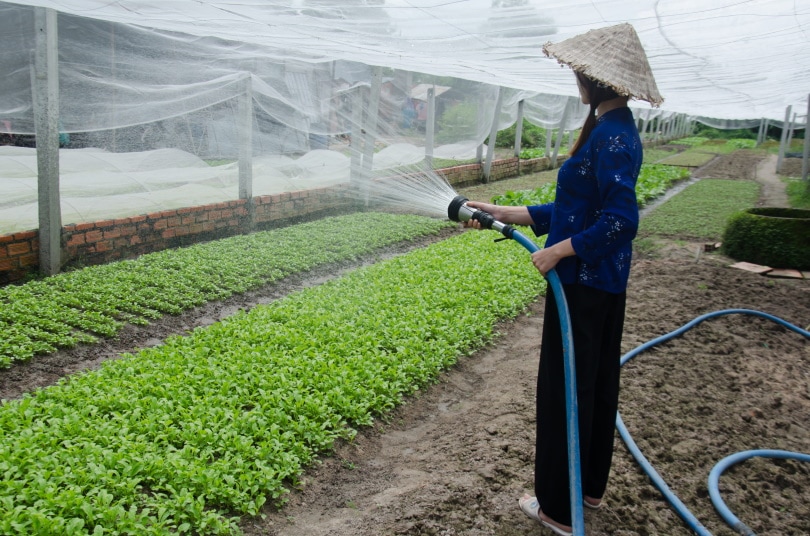
9. Utilize Row Covers
Row covers are the most underutilized tools in a garden shed. Basically, these are thin fabric pieces that cover plants to allow water and sunlight through while preventing pests from attacking your crops. They also help protect vegetables from unwanted environmental conditions. For instance, they will keep your plants warm in winter, thus protecting them from frost.
You can purchase row covers from your local farm suppliers in small quantities. Position them over your plants, then weigh them down on the sides using sandbags or rocks. Alternatively, you can wire some hoops to create a low tunnel over taller plant varieties like beans, broccoli, or cauliflowers.
Row covers are especially ideal for beginner gardeners because they help prevent initial pest attacks. Just make sure it doesn’t get too hot under the covers, or your plants will wilt and die.

10. Destroy Weeds While Still Young
As mentioned earlier, toxic herbicides are a huge no in an organic garden. If weeds start creeping up in your garden, you can utilize manual weeding methods, which entail hoeing or hand pulling. You can also utilize preventative weed control methods to keep them at bay.
Since weeds tend to grow much faster than vegetables, the best way to curb their spread is to remove them while still young. Hoe them out with a wire weeder to prevent them from overcrowding and choking out your vegetables.
Failure to weed your garden on time will lead to the disruption of your vegetable’s root zones. The weeds could also remove a lot of your topsoil layer.

11. Use Mulch on Your Vegetable Garden
As earlier mentioned, mulch is made up of decomposing organic materials that can help improve soil quality. It also helps reduce watering requirements and suppress weeds in your vegetable patch. Generally, the best mulch for vegetable gardens should have compost, fallen leaves, and straw.
If you want to use mulch for pathways, consider using newspapers, sheet-mulch cardboard, or even wood chippings. These mulches will welcome beneficial insects like earthworms and other microorganisms to improve your garden soil.
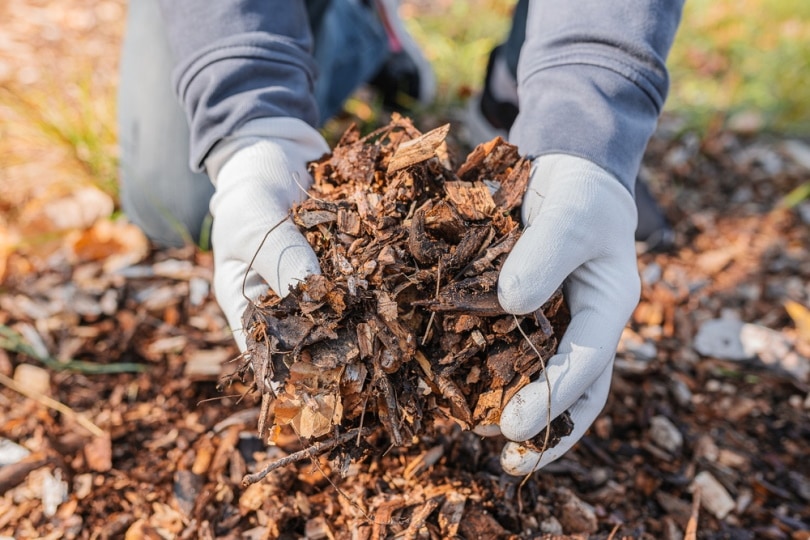
Conclusion
Organic vegetable gardening is a healthy hobby that can be truly rewarding. It avails various benefits like the satisfaction of eating fresh farm vegetables or beautifying your yard with colorful blooms. By utilizing the growing tips presented in this article, you can significantly improve the yields from your patch and turn your yard into a mini paradise.
Like any other skill, organic gardening requires research, practice, and several attempts to get it right. Even experienced gardeners have messed up at one point or another. If your first attempt fails, don’t be discouraged, there will always be new seeds and more opportunities to learn how best to grow organic vegetables.
Featured Image Credit: Ivonne Wierink, Shutterstock
Contents


